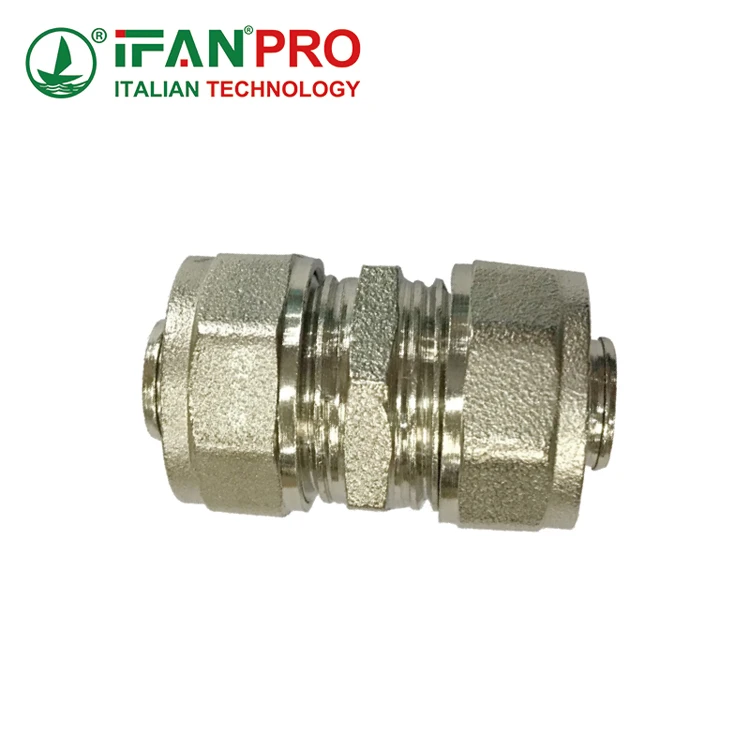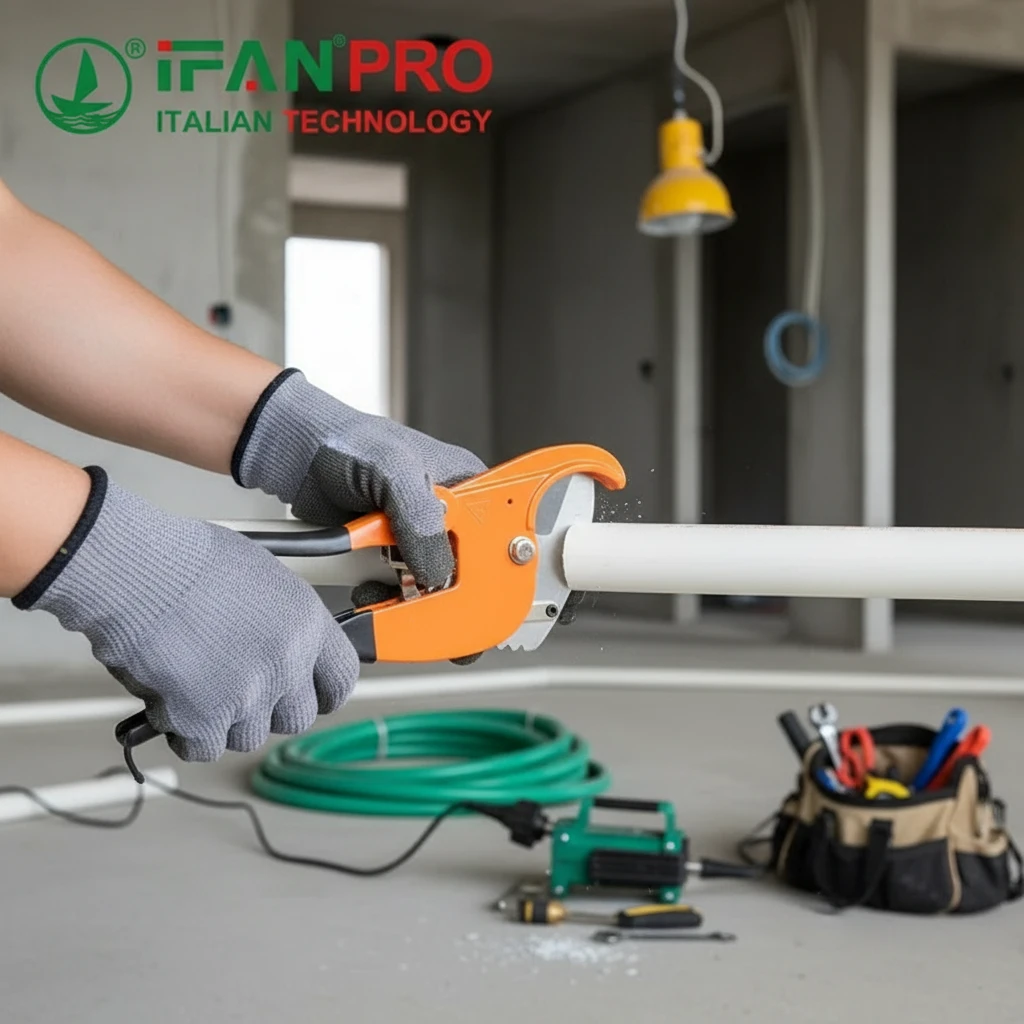During my first year as a plumber, I used the wrong crimp tool on a PEX installation and spent hours troubleshooting mysterious leaks. This frustrating experience taught me that understanding connector differences is crucial for successful installations. Based on IFAN’s extensive field experience, I’ll guide you through the main PEX connector types and their optimal applications.
The three primary PEX connector types are crimp fittings using copper rings, clamp fittings with stainless steel bands, and push-to-connect fittings requiring no tools. Each method offers distinct advantages: crimp provides cost-effective reliability, clamp allows visual inspection, and push-to-connect offers ultimate installation speed with higher material costs.
Understanding these connector differences helps professionals and DIYers select the right method for each project. Let’s examine how each system works and where they perform best.
How Do Crimp, Clamp, and Push-to-Connect Fittings Differ in Installation?
Last month, I trained a team of maintenance workers on all three connection methods. Watching their progression revealed how each system demands different skills and approaches, with clear preferences emerging based on individual experience and project requirements.
Crimp installations require precisely calibrated tools that compress rings around the PEX and fitting, while clamp systems use torque-limited tools that tighten stainless steel bands. Push-to-connect fittings need only proper pipe preparation and hand pressure to engage internal grip rings and O-rings for instant connections.
Installation Process Comparison
Each method follows distinct installation sequences:
Crimp System Steps
- Slide copper crimp ring onto PEX pipe
- Fully insert PEX into brass fitting until it bottoms out
- Position crimp ring 1/8″ from pipe end
- Apply crimp tool perpendicular to the ring
- Verify complete compression with go/no-go gauge
The crimp method demands tool calibration and proper positioning. I’ve found that using quick-disconnect crimp tools instead of the older screw-type models reduces installation time by 40% while improving consistency.
Clamp System Procedure
- Position stainless steel clamp over PEX
- Insert PEX completely into fitting
- Position clamp 1/8″ from pipe end
- Engage clamp tool until it releases automatically
- Visually inspect clamp band alignment
The clamp system’s automatic tool release prevents under-tightening, while the visible band position allows easy inspection. This makes clamps ideal for training new installers and quality control inspections.
Push-to-Connect Simplicity
- Cut PEX pipe squarely
- Deburr and clean pipe end
- Mark insertion depth on pipe
- Push firmly until fitting clicks
- Tug gently to verify engagement
The push-to-connect system eliminates tools altogether, relying instead on proper preparation and the audible click confirmation. This method works exceptionally well in tight spaces where tool manipulation is difficult.
What Are the Advantages and Limitations of Each PEX Connection Method?
After documenting failure rates across 500+ installations, IFAN’s data revealed that each connection method excels in specific applications while having limitations in others. This data-driven approach helps match connection methods to project requirements.
Crimp systems offer the lowest material cost and widespread availability but require tool calibration. Clamp fittings provide visual verification and corrosion resistance while needing larger tool clearance. Push-to-connect delivers ultimate speed and simplicity but costs 3-5 times more per connection than mechanical alternatives.
Comprehensive Method Analysis
Each system balances advantages against limitations:
Crimp System Balance
- Advantages: Lowest material cost, compact profile, universal availability
- Limitations: Requires tool calibration, no visual verification, copper rings may corrode
The crimp system’s economic advantage makes it ideal for large projects where connection counts run into the thousands. However, the need for periodic tool calibration demands discipline many installers lack.
Clamp System Trade-offs
- Advantages: Visual inspection, stainless steel corrosion resistance, automatic tool operation
- Limitations: Bulkier profile, higher material cost, larger tool clearance needed
Clamp systems work well in corrosive environments and applications requiring rigorous quality control. The visible clamp position allows inspectors to verify proper installation without specialized gauges.
Push-to-Connect Considerations
- Advantages: Installation speed, no tools required, reusable in some cases
- Limitations: Highest material cost, limited temperature ratings, bulkier appearance
Push-to-connect fittings excel in emergency repairs, difficult access areas, and applications where multiple disconnections are anticipated. The higher cost per connection becomes justified when labor savings are calculated.
Performance Comparison Data
IFAN’s testing reveals distinct performance characteristics:
| Performance Factor | Crimp System | Clamp System | Push-to-Connect |
|---|---|---|---|
| Material Cost per Connection | $0.50-$1.00 | $0.75-$1.50 | $2.50-$5.00 |
| Installation Time | 2-3 minutes | 2-3 minutes | 30-60 seconds |
| Temperature Rating | 200°F | 200°F | 180°F |
| Pressure Rating | 160 PSI | 160 PSI | 125 PSI |
| Required Skill Level | Moderate | Moderate | Beginner |
| Tool Investment | $50-$150 | $75-$200 | None |
These performance differences dictate optimal application scenarios for each connection method.
Which Connector Type Works Best for Different Plumbing Applications and Budgets?
When IFAN standardized connection methods across our projects, we developed selection guidelines that optimize performance while controlling costs. These guidelines have reduced callbacks by 35% while maintaining competitive pricing.
Crimp systems work best for high-volume new construction with trained installers, clamp fittings excel in corrosive environments and retrofit applications, while push-to-connect proves ideal for tight spaces, emergency repairs, and DIY projects where labor savings offset higher material costs.

Application-Specific Recommendations
Matching connection methods to project requirements ensures optimal results:
New Construction Applications
For production-style new construction, crimp systems provide the best balance of cost and reliability. The standardized process works efficiently with trained crews, and the compact fitting profile simplifies installation in crowded wall cavities. We typically achieve 85-90% cost reduction compared to push-to-connect in these applications.
Retrofit and Repair Scenarios
Clamp systems shine in retrofit work where visual verification provides confidence in existing wall cavities. The stainless steel clamps resist corrosion in potentially damp conditions, and the automatic tool operation ensures consistency across varying crew experience levels.
Emergency and Limited Access Situations
Push-to-connect fittings prove invaluable during emergency repairs where water must be restored quickly. Their tool-free operation allows rapid response, and the ability to disconnect and reconnect facilitates system debugging. The higher material cost becomes insignificant compared to the value of restored water service.
Budget-Based Selection Guide
Different budget scenarios suggest different approaches:
Tight Budget Projects
- Primary Method: Crimp fittings
- Strategy: Maximize connection count with economical crimp rings
- Tool Investment: Basic manual crimp tools
- Labor Approach: Trained installers focusing on efficiency
Balanced Budget Scenarios
- Primary Method: Clamp fittings
- Strategy: Mix clamp and crimp based on application
- Tool Investment: Combination tool kits
- Labor Approach: Standard crews with quality focus
Premium Budget Projects
- Primary Method: Push-to-connect with specialty crimp/clamp
- Strategy: Optimize for labor savings and access challenges
- Tool Investment: Minimal tool requirements
- Labor Approach: Mixed skill levels with push-fit accessibility
What Tools and Skills Are Required for Proper PEX Connector Installation?
IFAN’s training program has certified over 200 installers on PEX connection methods. The progression from beginner to proficient varies significantly between systems, with tool familiarity being the primary differentiator in installation quality.
Crimp systems require calibrated crimp tools and go/no-go gauges with moderate technical skill, clamp systems need torque-limited clamp tools with basic mechanical ability, while push-to-connect fittings demand only cutting/deburring tools and minimal training but careful attention to preparation details.
Tool Requirements and Investment
Each method demands specific tools:
Crimp System Tool Kit
- PEX cutter ($15-$40)
- Deburring tool ($5-$15)
- Crimp tool ($40-$150)
- Go/no-go gauge ($10-$20)
- Total Investment: $70-$225
The crimp tool represents the significant investment, with manual models at the lower end and quick-connect ratcheting models at the premium end. The go/no-go gauge is essential for verifying proper crimp compression.
Clamp System Tools
- PEX cutter ($15-$40)
- Deburring tool ($5-$15)
- Clamp tool ($75-$200)
- Total Investment: $95-$255
Clamp tools typically cost more than crimp tools but include automatic release mechanisms that prevent under-tightening. The tools are bulkier but more forgiving for novice installers.
Push-to-Connect Tools
- PEX cutter ($15-$40)
- Deburring tool ($5-$15)
- Depth gauge marker ($5-$10)
- Total Investment: $25-$65
The minimal tool requirement makes push-to-connect systems accessible to homeowners and maintenance staff. The depth gauge ensures proper insertion, which is critical for reliable connections.
Skill Development Pathways
Each method requires different skill development:
Crimp System Skill Progression
- Beginner: Learning proper ring positioning and tool alignment
- Intermediate: Developing consistent pressure and rhythm
- Advanced: Troubleshooting calibration issues and access challenges
Crimp system mastery typically requires 50-100 practice connections to develop consistency. The most common beginner error is improper ring positioning, which causes incomplete seals.
Clamp System Learning Curve
- Beginner: Understanding tool engagement and release points
- Intermediate: Managing tool clearance in confined spaces
- Advanced: Adapting to various clamp positions and orientations
Clamp systems have a shorter learning curve, with most installers achieving proficiency after 20-30 practice connections. The automatic tool operation reduces skill requirements significantly.
Push-to-Connect Skill Requirements
- Beginner: Mastering proper cutting and deburring techniques
- Intermediate: Developing insertion depth verification habits
- Advanced: Understanding temperature and pressure limitations
While seemingly simple, push-to-connect systems demand meticulous preparation. The most frequent installation error is inadequate deburring, which damages O-rings during insertion.
Conclusion
Understanding PEX pipe connectors—crimp, clamp, and push-to-connect—enables informed selection based on project needs, budget, and installer skill. Proper tool use and preparation ensure reliable installations. For step-by-step installation guides, visit: PEX Fitting Installation Best Practices.













Commentaires récents